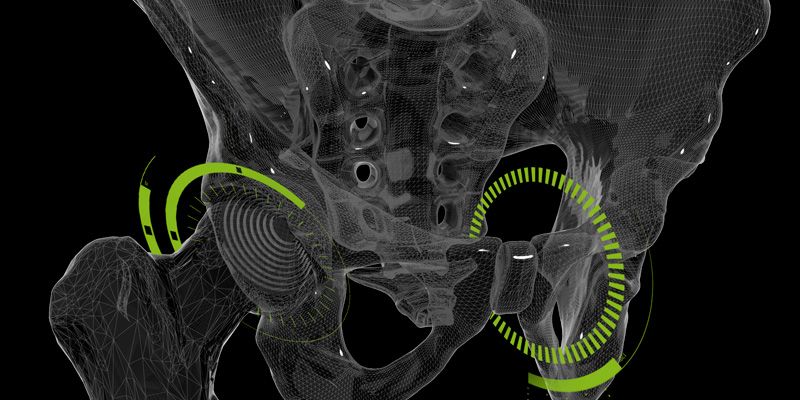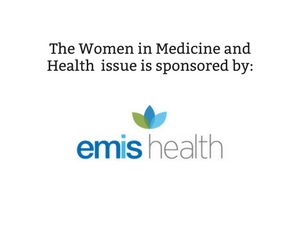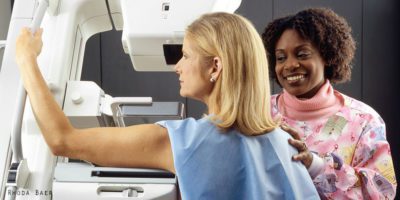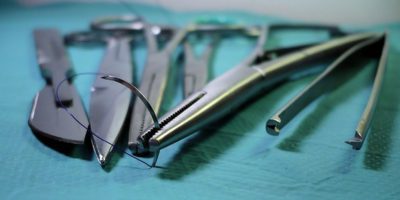Catherine Stambouzou is a medical engineer working for Corin, a leader in orthopaedic innovation. Catherine manages the research and development team in Sydney, who develop innovative solutions to improve patients’ specialised care. Following the birth of her son, she appreciates Corin’s support during maternity leave and positive attitude towards flexible working patterns.
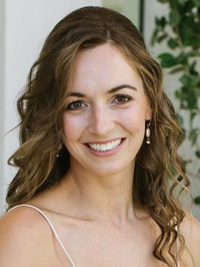
“…Personalised technology, data science, 3D printing, augmented, virtual and mixed reality and artificial intelligence (AI) are all buzz words in the technology space at the moment, and we are right at the heart of it…”
The pathway to orthopaedics
I have always been good at maths and science, but I was never interested in designing cars or planes. When I first came across medical engineering, it seemed to be the perfect combination of my interests and strengths. I completed my bachelor’s and master’s degrees at the University of Bath, which involved a sandwich year working in industry.
I was lucky enough to be employed by an innovative tech company based in Cambridge, where I designed and tested prosthetic intervertebral discs for the spine. I later re-joined this group to design some surgical instrumentation. This, together with the orthopaedics-focused research taking place at uni, introduced me to the world of bones and joints!
After uni, I joined another medical device manufacturer, this time based in London. Their specialty was extreme orthopaedics, and a lot of their products were designed to help patients with bone cancer. My project focused on the development a prosthetic implant for amputees, to provide a more biomechanical fixation (directly to the bone) of their prosthetic limbs.
Personalised approach
I moved to Sydney in 2014, and was lucky enough to meet an innovative group, called Optimized Ortho, developing surgical technology for hip and knee replacements. This time, rather than designing implants, the focus was to improve gaps in the orthopaedic industry by designing individualised (patient specific) technologies to help surgeons plan and execute their surgeries.
Our focus is functional and dynamic planning – in other words, understanding how individuals move during a range of daily activities and tailoring their surgeries accordingly. Optimized Ortho was later bought by Corin, an implant manufacturer based in Cirencester, but the development of technology to support surgeons continues to be based in Sydney.
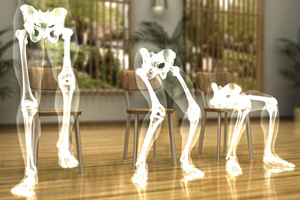
The balancing act of a medical engineer
Typically, my day consists of a balance of:
- Working with surgeons to ensure we are translating their requirements into practical solutions;
- Testing products in cadaver labs and clinical trials;
- Preparing our portfolios for review by international regulatory bodies (so that we can take our products to new markets);
- Working with our production and software teams to ensure the products we are developing can be produced on a large scale and;
- We often present our research at orthopaedic conferences, and publish in medical journals.
Positive impacts for all
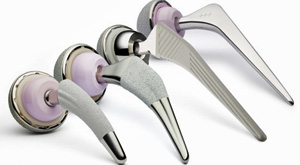
Medical engineering is truly an application of ‘technology for good’. There is a real human element in everything we do. I always remind our engineers that for anything they design or test, they should imagine it was intended for their mums!
New innovations at the heart of our work
Personalised technology, data science, 3D printing, augmented, virtual and mixed reality and artificial intelligence (AI) are all buzz words in the technology space at the moment, and we are right at the heart of it. I am excited to be working on projects that utilise modern technology to reduce cost and improve outcomes in orthopaedics.
Sydney has an exciting and growing tech hub, with a number of innovative companies, including Optimized Ortho, 360 Knee Systems and Anatomics.
Importance of good company support during and after maternity leave
Throughout my maternity leave, I was comforted in knowing that my career was not forgotten, and appreciated the company’s flexibility in refining my working arrangement once I returned to work. As a new mother, you are faced with a tonne of new challenges, and with no family in Australia, it was essential that I felt supported during this time.
I returned to work on a part time basis in September, and find that it is the perfect balance for me at the moment. I went on maternity leave following the birth of my son, from January to August this year. Knowing that I had the full support of my company was essential to allow me to embrace becoming a mother, and take time to grow into this new role in my life.
https://www.coringroup.com/home/
https://twitter.com/corintechnology

